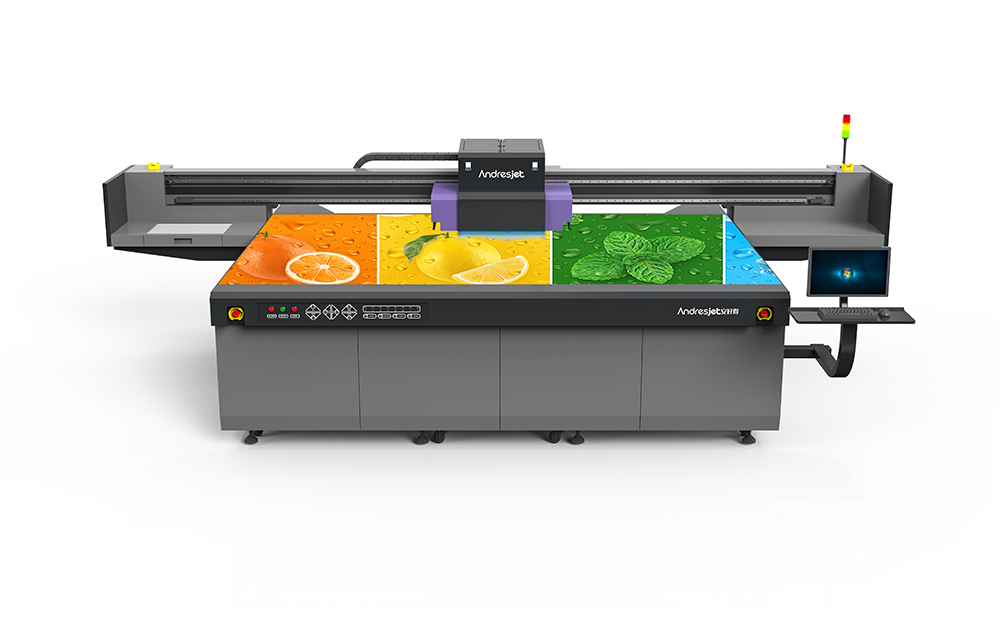UV Flatbed Printer: Understanding Print Speed and Throughput
UV Flatbed Printer: Understanding Print Speed and Throughput
In the world of digital printing, the UV flatbed printer stands out as a versatile and efficient tool, especially when it comes to printing on various materials and shapes. However, to fully harness its potential, it’s crucial to understand two key performance metrics: print speed and throughput. These factors not only affect the printer’s efficiency but also determine its profitability in a commercial setting.

Print Speed: More Than Just a Number
Print speed, often measured in square meters or square feet per hour, is a critical parameter in assessing a UV flatbed printer’s performance. However, it’s not just about the raw number. The speed at which a printer can produce output is influenced by several factors, including the complexity of the design, the resolution required, and the type of material being printed on.
For instance, a highly detailed design with multiple colors and gradients will naturally take longer to print than a simpler, single-color design. Similarly, printing on rough or textured surfaces might require slower speeds to ensure proper ink adhesion and color saturation.
It’s essential to note that while high print speeds are desirable, they shouldn’t be the sole criterion for selecting a UV flatbed printer. Faster speeds might come at the cost of reduced print quality, and vice versa. Finding the right balance between speed and quality is key to meeting customer expectations and maintaining a high level of satisfaction.
Throughput: The Bigger Picture
While print speed focuses on the rate of printing a single job, throughput considers the overall efficiency of the printing process. It encompasses factors like job preparation time, print speed, drying or curing time, and any necessary post-processing steps.
In a commercial printing environment, maximizing throughput is crucial for maintaining profitability. This involves optimizing workflow, reducing downtime, and ensuring a smooth transition between jobs. For example, investing in a UV flatbed printer with a fast curing system can significantly reduce the time it takes for prints to be ready for handling, thereby increasing overall throughput.
Another aspect of throughput is the printer’s ability to handle different materials and sizes. A UV flatbed printer that can accommodate a wide range of substrates, from rigid materials like wood and metal to flexible ones like canvas and vinyl, offers greater versatility and, therefore, higher potential throughput.
Factors Influencing Print Speed and Throughput
Ink Type and Quality: Different inks have varying drying and curing times, which directly affect throughput. UV-curable inks, for instance, are known for their fast curing times, enabling quick turnaround and higher productivity.
Printer Resolution: Higher resolutions require more ink and time to deposit, slowing down the print speed. However, they often result in superior print quality, which might be worth the trade-off in certain applications.
Printer Maintenance: Regular maintenance, such as cleaning print heads and checking ink levels, is crucial for maintaining optimal print speeds and preventing downtime due to technical issues.
Job Complexity: As mentioned earlier, complex designs with multiple colors and gradients take longer to print. Preparing and optimizing files before printing can help reduce print time.
Operator Skill: A skilled operator can efficiently manage job queues, troubleshoot minor issues, and ensure the printer is running at its maximum capacity.
Choosing the Right UV Flatbed Printer
When selecting a UV flatbed printer, it’s important to consider not just the initial cost but also the long-term operating costs, including ink consumption, maintenance, and energy usage. Additionally, the printer’s versatility, reliability, and ease of use should be evaluated.
It’s advisable to conduct a thorough needs analysis before investing in a UV flatbed printer. Consider the types of jobs you’ll be printing, the required print quality, and the materials you’ll be working with. Also, take into account your current and future workload to ensure the printer can handle your demands.
Conclusion
Understanding print speed and throughput is essential for anyone considering investing in a UV flatbed printer. These metrics are not just about numbers; they reflect the efficiency, productivity, and ultimately, the profitability of your printing business.
By carefully evaluating your needs, selecting the right printer, and optimizing your workflow, you can ensure that your UV flatbed printer becomes a profitable asset rather than a costly liability. Remember, it’s not just about the fastest print speed but about finding the right balance between speed, quality, and versatility to meet your specific printing needs.
